*****************************************************************************************************************************************************************
Commercial Vehicles
*****************************************************************************************************************************************************************
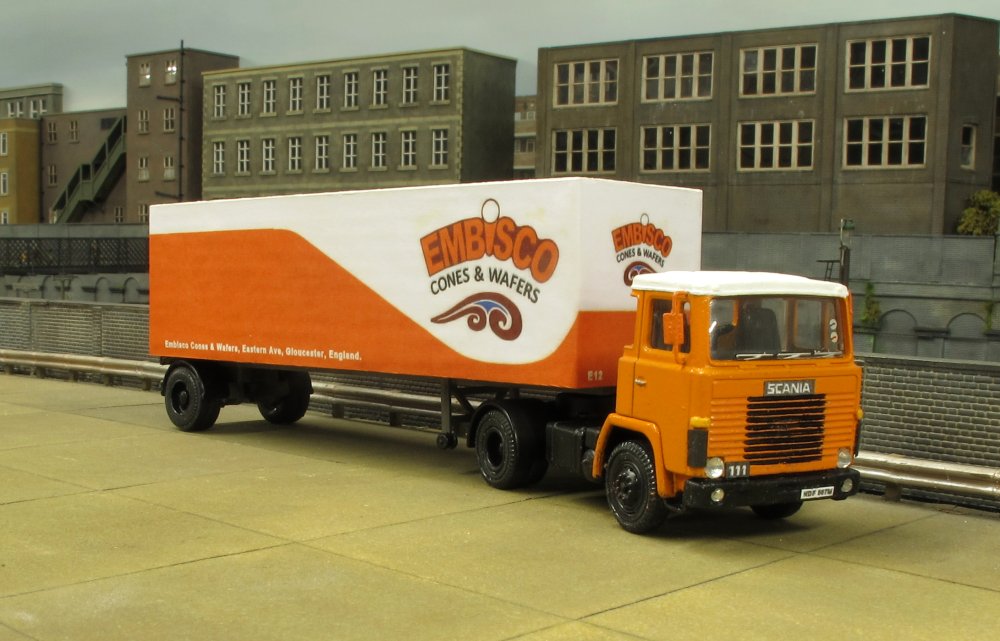
Embisco was a joint venture between Wall's and Lyons Maid, producing cones and wafers
in a dedicated wafer factory built in the early 1960s at the north corner of the factory
site in Gloucester. The Scania 111s and the 30ft single axle box trailers bring back fond
memories for me when working there in the 1970s. Modified tractor unit by Oxford diecast.
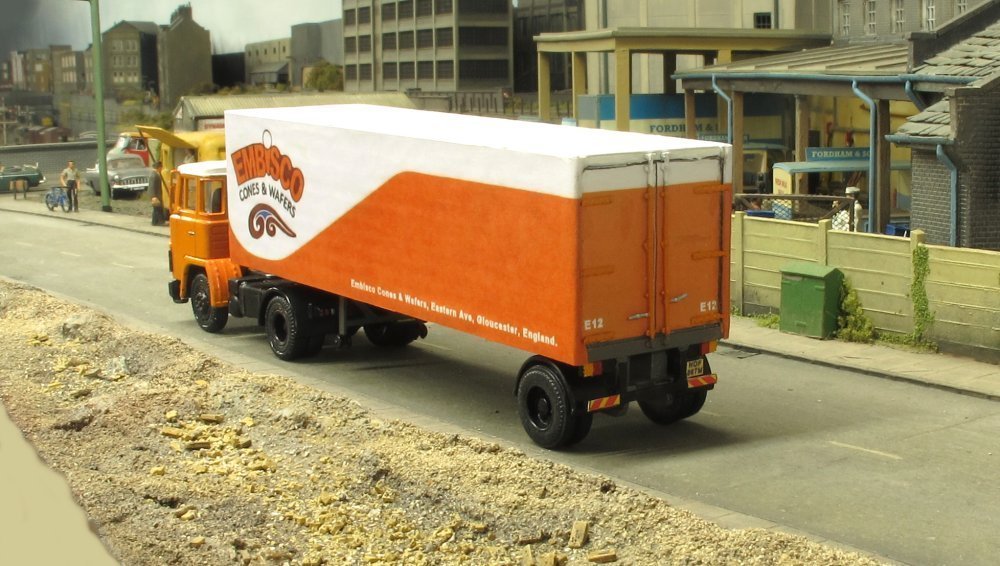
There were slight variations in the trailer liveries, the earlier ones sporting a 'Wafers'
logo in place of 'Embisco', with some swirls facing different ways, and others with
more sweeping orange curves. After the artwork was drawn up it was printed onto paper, cut
out and wrapped around a modified 30ft container, then the rear doors fitted and detailed
with locking bars and hinges. The rear axle and mudguards were from a surplus Basetoys
trailer, with the chassis and rear end made up from Evergreen strip.

Another proprietry item by Lledo is this ERF tractor & trailer enhanced with extra detail, to
include a driver, rear view mirrors and flexible hoses.

Another view of the lorry entering Fordham's yard, showing additional detail added to the trailer.

Canada Road got by without any road vehicles for 25 years, but on Canada Street they really
are needed. Choosing suitable types to cover the 1960s and 70s is a challenge, and perhaps a
bit of a historical ‘stretch’ if I’m honest. For an HGV I’ve chosen this ERF KV 4-axle flatbed…..
a chassis format that is mostly used only in stone tippers these days, but was far more common
before articulated rigs were permitted. The vehicle models available now feature superb livery
detail, and all I’ve had to do is customise the tarped load a bit and add a little road grime.

Another new item for Canada Street is an HGV for the early 1970s. This BRS Scania 110 is the
Oxford die-cast model, with a little work on the glazing and rear lights. The long crate load
was put together from Slaters planked sheet.

With thanks to the Wessex Historic Military Vehicle group, and a former RL owner, the Oxford
die-cast model has had the canvas tilt re-shaped to better match the standard army version. The
support frame had two settings, giving a 12 inch difference in overall height, and to remain
within the BR loading gauge the lower position was required during rail transport – giving the
RL a 9 foot and ½ inch total height when unladen. A photograph from the early 1960s of Territorial
Army vehicles on their way to the Otterburn ranges by train to Woodburn inspired a new project
for the Hartburn layout. The mountain rescue Bedford RL truck provides the basis for this model
of the regular Army standard transport of the 1960s and early 1970s.

Fork truck transport trailer built from styrene sheet. It's been reinforced by a rim of
brass wire and the decking is a thin embossed sheet of chequer pattern. The hydraulic rams
are from scrap bits of brass tube and steel wire.

Chocks of wood and some lengths of chain to be added around the winch area.

Here are a couple of 3D printed chassis of different lengths (and wheel sizes) for the Carflat
train - modified from the Base Toys Ford D series lorries glued and chocked on to the wagon.

We can assume that wing mirrors will be fitted by the coach works, dependant on body styles.

Matador recovery truck in the process of rescuing an AEC Swift on Hornsey New Road,
operating on trade plates 535 LB.
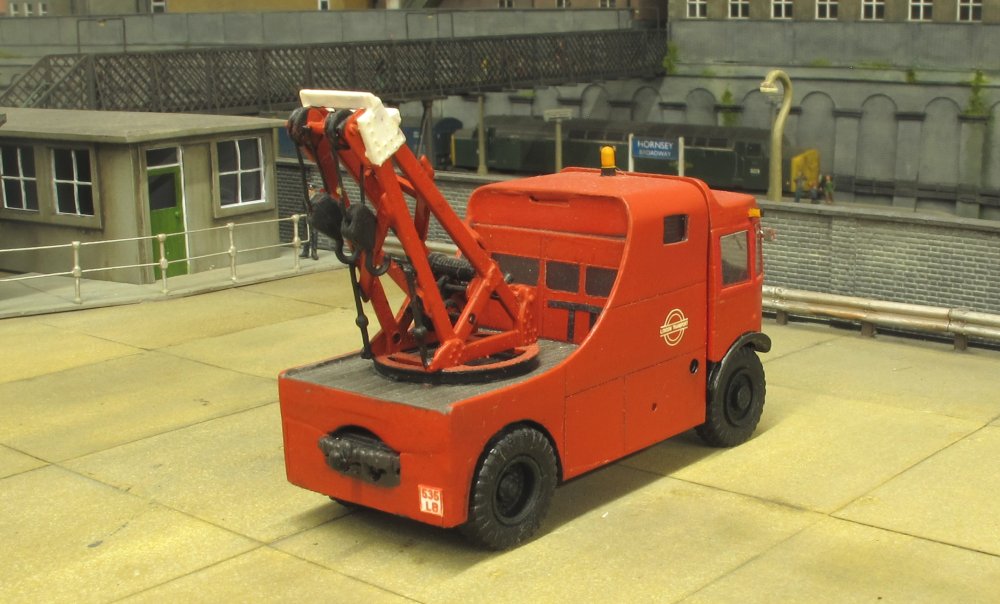
Converted from an Oxford Diecast model with the curved cab roof removed and reconstructed
with a spoiler. The body is scratchbuilt from styrene sheet.
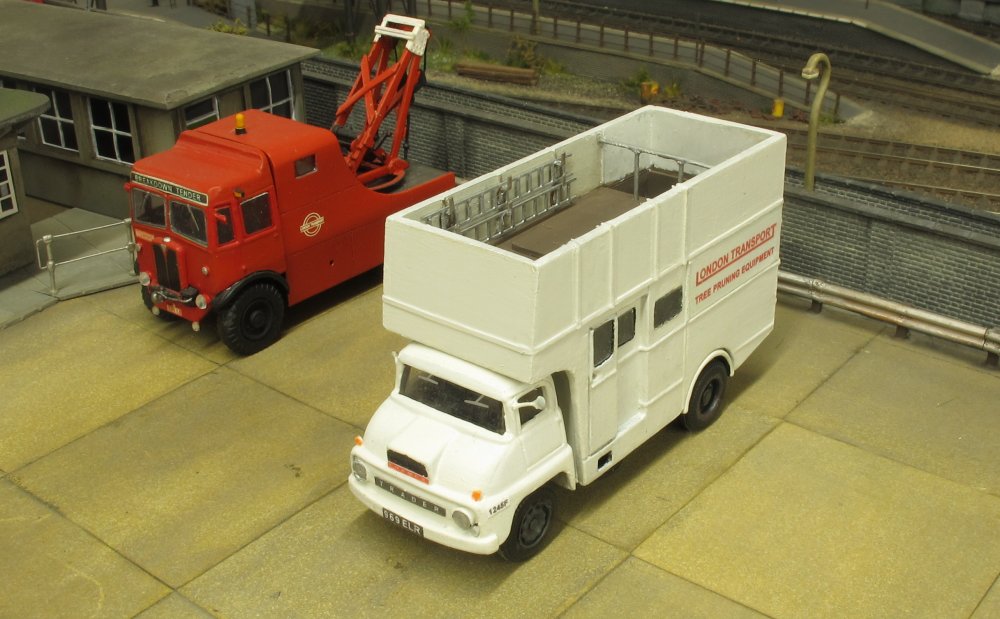
1245F was one of 5 vehicles which were all delivered in an off-white / light grey livery,
with 4 being transferred to the new London Country operation in 1970. One was retained by
London Transport and repainted into green livery. They were eventually replaced during
1976 to 1979, following the delivery of new Ford D series lorries (of which 2 used the
original bodies from the Traders).
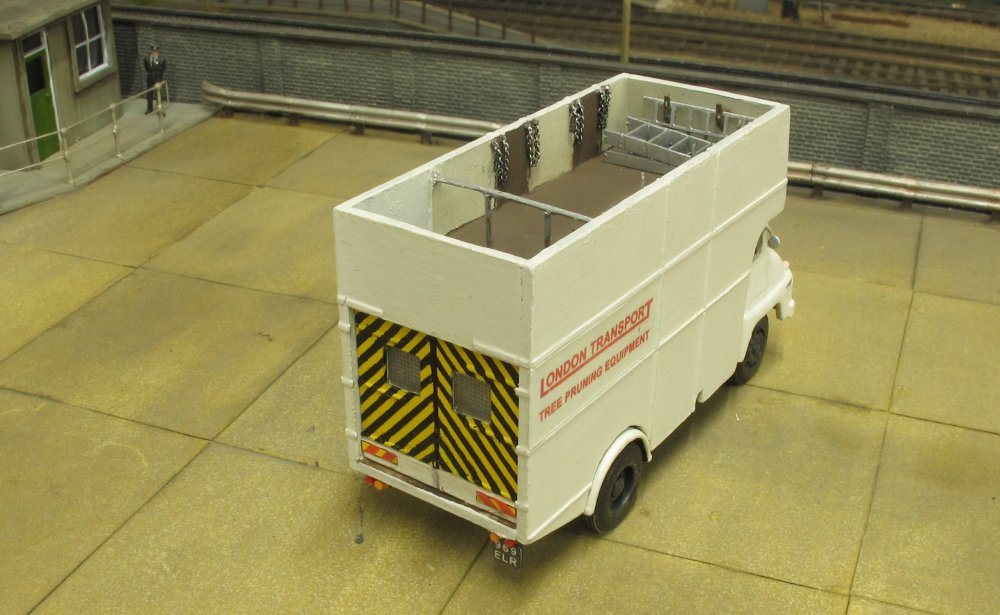
These vehicles had a sliding door on the nearside for crew access to the upper deck, and
large rear doors (with yellow and black chevrons) for unloading foliage and branches.
There's still some more work required before it's finished, including glazing and
transfers instead of the printed paper lettering.

This is an Airfix Matador conversion with a box body trailer. The box container was cast in
resin from a plastic card master. The model represents a post-war airfield GCA (Ground
Controlled Approach), set up to help aircraft land in poor weather conditions.

The heavy haul lorry and plant, using Kibri plastic excavator / low loader kit,
and a 'Trackside' diecast tractor unit. The tarmacadam machine is also by Kibri to 3.5mm scale, but
fits into a 4mm scale scene relatively well.

Bedford TK coal lorry at Easington Lane (EFE model).

BRS garage at Shenston Road.
*****************************************************************************************************************************************************************






















